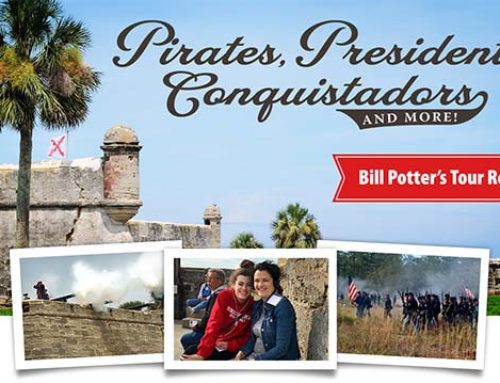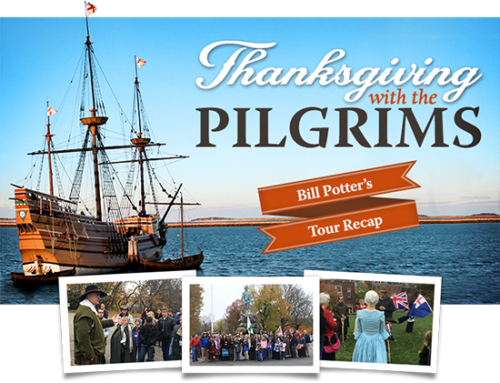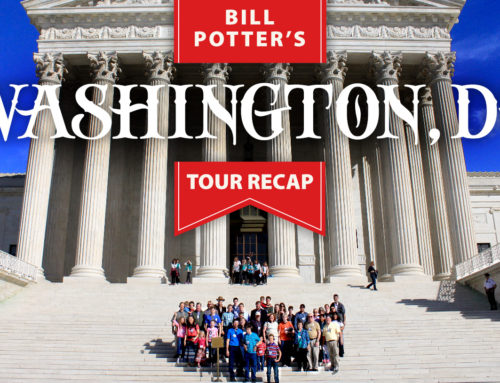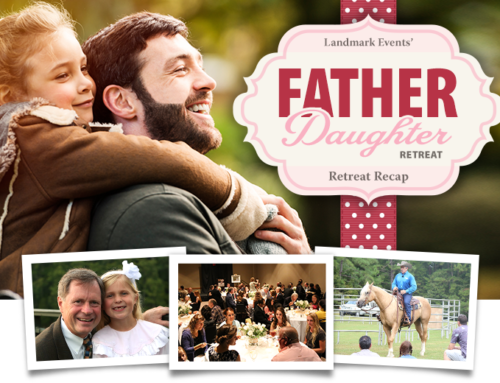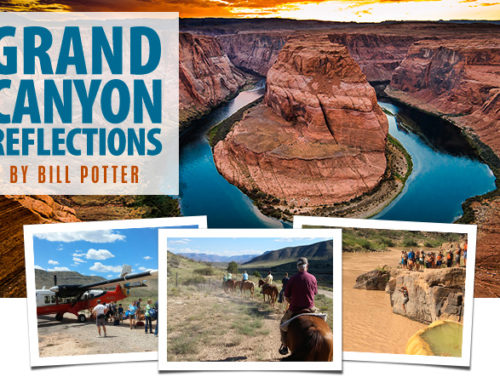
Dear friends,
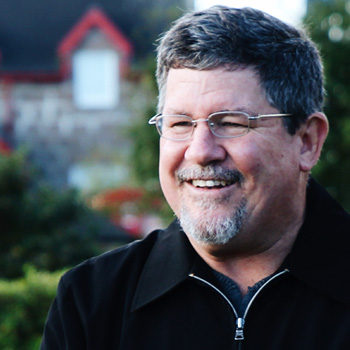 Last month, Landmark Events journeyed to Scotland on a remarkable tour with one of the sweetest groups of travelers ever assembled. We asked Landmark historian Bill Potter to compose an overview so we can share just a glimpse of what we experienced — a tall order given the great scope of all we experienced.
Last month, Landmark Events journeyed to Scotland on a remarkable tour with one of the sweetest groups of travelers ever assembled. We asked Landmark historian Bill Potter to compose an overview so we can share just a glimpse of what we experienced — a tall order given the great scope of all we experienced.
—Kevin Turley, President of Landmark Events
Week 1: Lowlands
In the early autumn of 2015, we joined together an intrepid band of travelers whose imaginations had been fired by history and its Lord, and by myths, music and stone to time travel in Scotland. We began where all travelers begin, in Edinburgh, the city whose tales have no end but where many famous lives finished their course. Our guides along the way: Colin Gunn, Marshall Foster and Bill Potter.
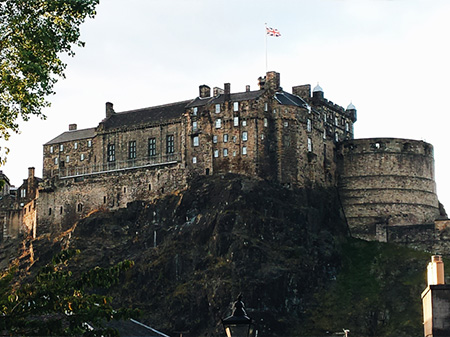
Edinburgh Castle*
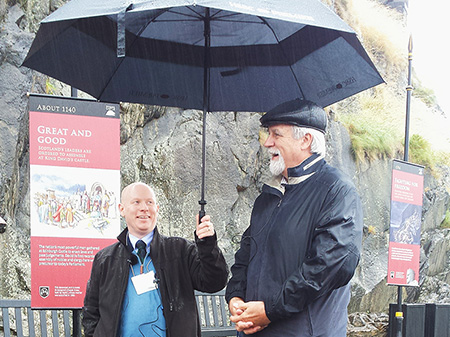
Bill Potter and Colin Gunn*
A survey by coach introduced the group to the town, New and Old though all of it pivots around one of the greatest castles of Christendom. We saw the front door and the training field of the great Christian Olympian runner, Eric Liddell. We strolled in the precincts of Holy Rude Castle, the domicile of kings and queens and got a first look at the narrow weinds, closes, and pounds-sterling vacuuming shops of the “Royal Mile.” To top off the day, our band passed through the portcullis of Edinburgh Castle, not the last one to so enter, gawked at the giant cannon Mons Meg, enjoyed the martial splendor of the Museums of the Royal Scots and the Royal Scots Dragoons Guards Regiments, and joined the reverential viewing of the National War Memorial. The Stone of Scone and Royal jewels reminded us that we were not from around there.

Our second day found us learning of John Knox as we gathered in his parking space grave and stood next to his statue in St. Giles Cathedral. One wonders what he would think of the stain glass windows, his own monument and the theology now regnant in the Church of Scotland, light years from his reformation formularies. Our visit to Knox’s house reminded us that he was a man with a family and subject also to the cares of this world. At Magdalen Chapel we saw the artifacts symbolic of the Covenanter world—a sword used in defense of family against the royal authority and the table on which the hanged and beheaded were lovingly prepared for burial. The marker to the Covenanter martyrs drew us to the Grass Market Square where so many saints laid down their lives for the Kingship of Jesus Christ. The Graveyard of Greyfriars Kirk memorialized the men and women who gave their lives for truth, the likes of Argyll, Guthrie, and Renwick. The cells of the Covenanter prisoners beckoned to remind us that some are called to real physical suffering for faithfulness. The great scholars and preachers of the Reformations are there too, represented by George Buchanan and Alexander Henderson, as well as their 19th century scribe, Thomas McCrie.
We received short lessons regarding the Scottish Enlightenment men such as David Hume and Adam Smith, who tried to roll back the sterner parts of their Reformed heritage and appeal to man’s reason as the source of truth. They had their affect but could not root out a sizable faithful remnant in the centuries to come.
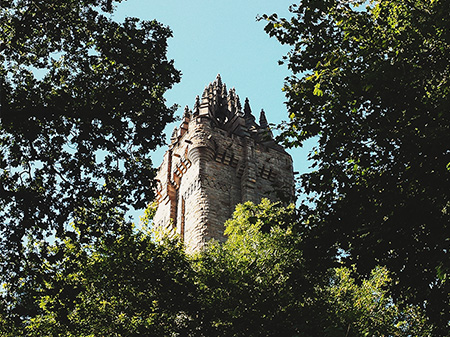
Wallace Monument*
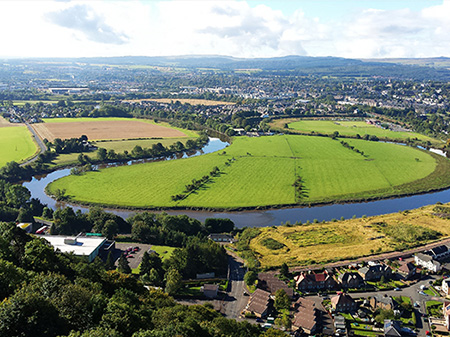
View of Stirling from Wallace Monument*
From the rampart of the incomparable William Wallace Memorial tower (one wonders what he would think of that), we looked over the Abbey Craig to the ancient town of Stirling and the river bend where King Edward’s knights came to grief. A visit to the castle and the Argyll and Southerland Regimental Museum there, along with the Robert the Bruce statue outside the walls remind the visitor of the martial ardor of the Scots through the ages. At the Church of the Holy Rude we heard the stories of Pastor James Guthrie and the never-ending turmoil in churches between those who wish to compromise with the culture or the state and those who won’t depart from historic biblical doctrine. The monuments in the cemetery attest to the willingness of some to stand firm in the face of death. In the Stirling plane we walked the battlefield of Bannockburn where King Robert Bruce defeated Edward II’s army and secured Scottish Independence for at least a few years. It had to be defended in every generation.

Stirling Castle
It seems like the story of Scotland could be told by castles alone. A favorite of many of our band proved to be the most difficult to get to &mdahs; Threave Castle on an island in the midst of the Dee River. Of Norman style, it was the oldest of all the ones we visited. Caelaverock Castle, made of red sandstone completed our visit to the Dumfries area, a place redolent with the border conflicts of Scotland through the ages.
Colin Gunn escorted us to his hometown of Hamilton and to nearby Glasgow. We walked in the precincts of the great Cathedral where the first Covenanter General Assembly was held under the direction of Alexander Henderson. The little church in Fenwick, pastored in 1641 by William Guthrie, was one of the wonders of the sojourn. On the walls were the original call of Guthrie by the men of the parish, a framed shadowbox containing the Bible of Captain John Paton, a professional soldier and martyr of the Covenant, a battle flag of the Covenanters, and the famous hour glass by the pulpit, put there to assure the auditors that they were not being short-changed hearing the Word of God expounded on the Sabbath.
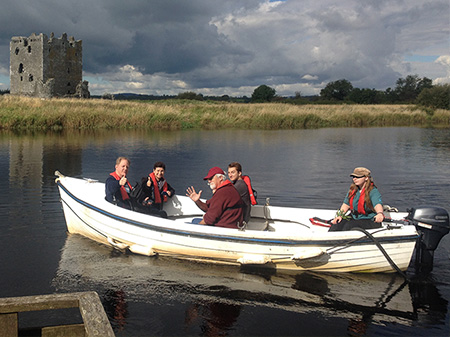
Crossing the Dee River to Threave Castle
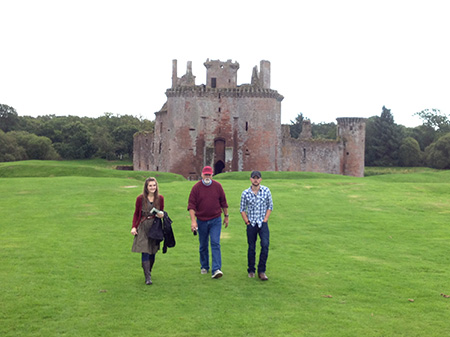
Beautiful Caerlaverock Castle
To the ancient site of the crowning of Scottish kings at Scone we went and to the Cathedral and castle ruins of St. Andrews. The spots of the executions of the first fruits of the Reformation, Patrick Hamilton and George Wishart, still lie by the college doors, a mute testimony to the spread of the Gospel by men who gave their lives in the 16th Century. We gathered around the grave of the great Samuel Rutherford, author of Lex Rex, a book that articulated the principles of liberty and defiance of those who would build tyrannical government in opposition to the Law of God.
Our first week ended with the usual blessed time of feasting and fellowship and recounting the Grace of God in history.
Week 2: Highlands
Several of our pilgrims returned home and were replaced by new ones for the tour of the Highlands. We parted company with Old Reeky and drove by coach to the historic city of Inverness. The Second best known battle in Scottish history occurred at “Culloden.” The last great rising of clansmen, a mere shadow of former glory, in defense of the Pretender, Bonnie Prince Charlie, and his claim to the throne, resulted in the destruction of the Jacobite army by a coalition of English and Scottish troops. That unique battlefield is commemorated by clan stones, flags, and a cairn monument—all decidedly favorable to the rising clans. In fifty years afterward Sir Walter Scott would turn the rebels into colorful mythological creatures of song, poetry, and nostalgia. Alba gu brath!
Our second stop brought us to Fort George, still an active military post currently housing a battalion of the Black Watch, one of the most storied regiments of Scotland and the museum of the Queens own Highlanders (how would you like to own your own highlanders?). The Fort contains all the classic elements of a state-of-the-art 18th Century fort: bastions, redoubts, casemates, bunkers, ravelin, drawbridge and moats in really nice condition since no one ever tried to test them in battle. It is a fort locked in time, unused but for drill.
Another beautiful drive brought us to two more lovely spots of war and mayhem, Urquhart Castle and Glencoe. The castle ruins are among the best known in Scotland since they sit above Loch Ness near the serendipitously named town of Drumnadrochit, and was fought over numerous times throughout history by the Earl of Ross MacDonalds and the Douglas Clan. The trebuchet outside the walls hearkened to the medieval times before artillery turned castles into inelegant piles of rock and dust. Our touring pastor took a dip in Loch Ness and did not see any untoward reptiles cavorting about the loch.
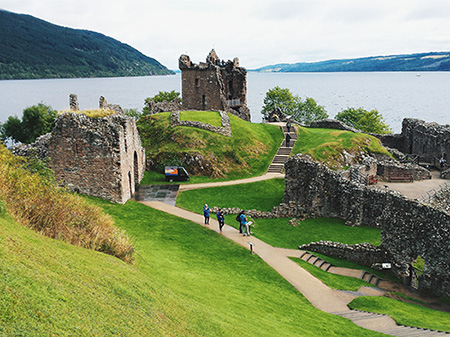
Urquhart Castle on Loch Ness*

Atop the Tower at St. Andrews Cathedral*
Passing the fog shrouded eminence of Ben Nevis, we pulled in at Glencoe, the sanguinary site of the massacre of thirty eight of one branch of the MacDonalds by a contingent of Campbells, who betrayed the shelter and hospitality they had been given for two weeks, before ambushing and slaughtering their hosts under instructions approved by King William in 1692. The memory of their historic conflicts lived on even in America, the new environment for the blood feuds of the past.
We spent two nights in the Victorian hotel, the Caledonian, in the picturesque fishing town of Oban. We rode to the ancient valley of Kilmartin where the cairns and standing stones speak of people dead for thousands of years in civilizations virtually unknown but by a few archeological and handcraft remains. We scaled the heights of the Scottish capitol of Dun Add, above the river of that name, and surveyed the valley from its height. Some put their foot in the indentation in the rock that many think was the crowning place of the ancient kings of Dalriada, including Kenneth McAlpine, who united the Picts and the Scots. We visited the Church of Scotland church which sits among the graves of people who passed from earth a thousand years ago and further back, including crusading knights. Our delightful lunch in the across the street tavern (which serves the one hundred twenty people of Kilmartin) included cullen skink (a soup, not the proprietor), haggis, and fish and chips, among other Scottish delicacies. Our final stop in Kilmartin at Carnassarie Castle had special meaning because it was the place where the seven foot tall Reformation bishop of the Isles, Sean Carsuil, translated John Knox’s Book of Discipline into the first Gaelic book ever written. He thus brought Reformation theology to the highlands and set the standard for Gaelic translation still in use today.
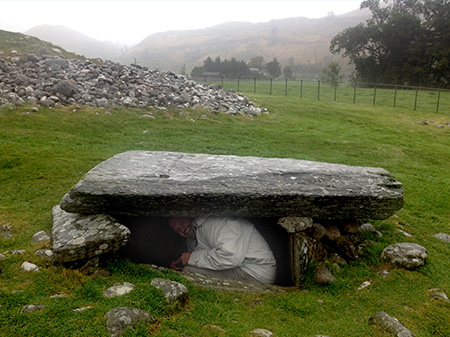
Pict Burial Cairn at Kilmartin
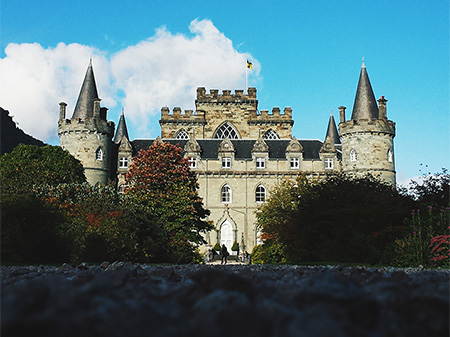
Inverary Castle
We crowned the day with a visit to Inverary Castle, the home of Clan Campbell’s Dukes of Argyll at the head of Loch Fyne. The current Duke was not at home but we were able to view the magnificent military trophies, documents, and luxury of past centuries, as well as walk the beautiful grounds and gardens of this Scottish showcase of the past.
We had the special privilege of spending our final two days on the Island of Iona, site of the monastery/mission station established by the Irish missionary Colm Cille (“Columba”) in the sixth century. The island thus became the platform to launch missionary endeavors of Celtic Christianity among the Scots of Dalriada, the Picts and the inhabitants of England and Europe. Getting there was more complicated than the little leather shells that transported the Irish. We sailed aboard large transport ferries and crossed the Island of Mull in a coach along a one lane road. While the buildings of Iona date back only to the middle ages, the spirit of the ancient missionaries still resonates in the atmosphere of the island. On our last day, some returned to Mull on an afternoon to visit Duart Castle, and many attended the local Highland concert that breaks up the routine of the island’s few inhabitants.
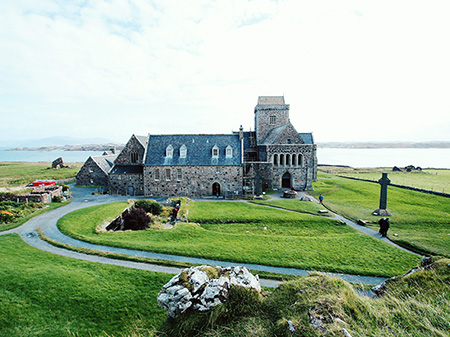
The Abbey on the Isle of Iona
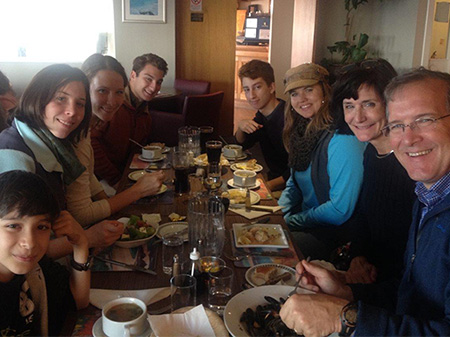
Beautiful Caerlaverock Castle
The return coach trip to Edinburgh gave everyone an opportunity to ruminate on all we had experienced and the final banquet was the bittersweet occasion once again to say goodbye to new friends and wonder why our kin ever left there in the first place. God was pleased to show us the wonders of the past and the evidences of His covenantal hand there, and renew in us a determination to be faithful in the times He has given us to serve Him.
Pro Corona et Foedere Christi,
Bill Potter
Plans are underway for next year’s Scotland tour with details coming soon. Hope to see you there!


